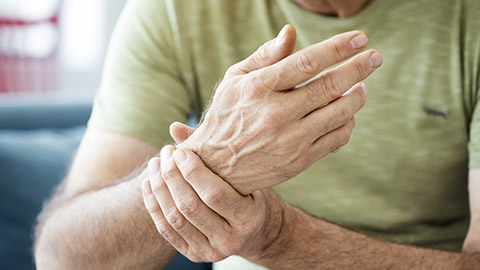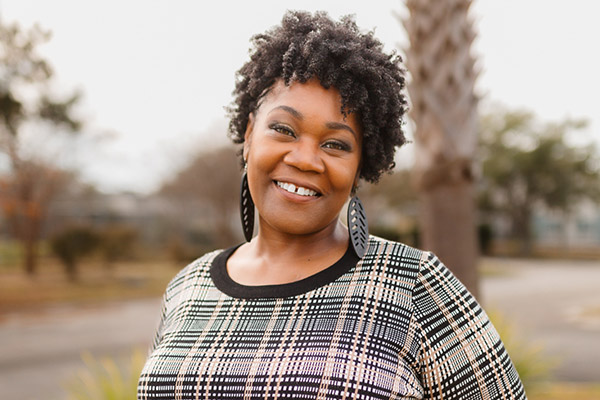01/14/2022

A client wakes up with a limp arm and wrist. He’s a carpenter, so this is a problem! What is going on, and can massage therapy help?
Join us for a closeup look at nerve damage and radial nerve palsy.
Resources:
Bumbasirevic, M. et al. (2016) ‘Radial nerve palsy’, EFORT Open Reviews, 1(8), pp. 286–294. https://doi.org/10.1302/2058-5241.1.000028.
Injury of Radial Nerve: Causes, Symptoms & Diagnosis (2015) Healthline. Available at: www.healthline.com/health/radial-nerve-dysfunction.
Massage & Bodywork - MAY | JUNE 2020 (no date a). Available at: www.massageandbodyworkdigital.com/i/1234356-may-june-2020/46.
Massage & Bodywork - MAY | JUNE 2020 (no date b). Available at: www.massageandbodyworkdigital.com/i/1234356-may-june-2020/32.
Radial Nerve Palsy | American Association of Neuromuscular & Electrodiagnostic Medicine. Available at: www.aanem.org/Patients/Muscle-and-Nerve-Disorders/Radial-Nerve-Palsy (Accessed: 11 January 2022).
Wu, Y.-Y., Hsu, W.-C. and Wang, H.-C. (2010) ‘Posterior interosseous nerve palsy as a complication of friction massage in tennis elbow’, American Journal of Physical Medicine & Rehabilitation, 89(8), pp. 668–671. https://doi.org/10.1097/PHM.0b013e3181c567af.
Sensory distribution of the brachial plexus (shown in red):



This podcast sponsored by:
About Anatomy Trains:
Anatomy Trains is a global leader in online anatomy education and also provides in-classroom certification programs for structural integration in the US, Canada, Australia, Europe, Japan, and China, as well as fresh-tissue cadaver dissection labs and weekend courses. The work of Anatomy Trains originated with founder Tom Myers, who mapped the human body into 13 myofascial meridians in his original book, currently in its fourth edition and translated into 12 languages. The principles of Anatomy Trains are used by osteopaths, physical therapists, bodyworkers, massage therapists, personal trainers, yoga, Pilates, Gyrotonics, and other body-minded manual therapists and movement professionals. Anatomy Trains inspires these practitioners to work with holistic anatomy in treating system-wide patterns to provide improved client outcomes in terms of structure and function.
Website: anatomytrains.com
Email: info@anatomytrains.com
Facebook: facebook.com/AnatomyTrains
Instagram: instagram.com/anatomytrainsofficial
0:00:00.0 Speaker 1: Ruth Werner's best-selling book, A Massage Therapist's Guide to Pathology is a highly regarded comprehensive resource that sets the standard for pathology education. Written for massage therapy students and practitioners, this ground-breaking resource serves up a comprehensive review of the pathophysiology signs, symptoms, and treatment of more than 500 diseases and disorders. Learn more at booksofdiscovery.com.
0:00:33.1 Speaker 2: Anatomy Trains is delighted to announce a brand new dissection live stream specialty class on September 18th, Lumbopelvic Stability, a one-day layered dissection with Anatomy Trains' author Tom Myers and master dissector, Todd Garcia. The early bird price of $150 is held until September 10th. After September 10th, the price is $250. Come see the body's actual core for yourself. This course will be provided over Zoom webinar with multiple camera views, live chat and Q&A. Visit anatomytrains.com to sign up.
[music]
0:01:15.4 Speaker 3: Hi, and welcome to I Have A Client Who, pathology conversations with Ruth Werner, the podcast where I will discuss your real life stories about clients with conditions that are perplexing or confusing. I am Ruth Werner, author of A Massage Therapist's Guide to Pathology, and I have spent decades studying, writing about and teaching about where massage therapy intersects with diseases and conditions that might limit our client's health. We almost always have something good to offer even with our most challenged clients, but we need to figure out a way to do that safely, effectively, and within our scope of practice, and sometimes, as we have all learned, that is harder than it looks.
0:02:01.0 S3: Today's episode comes from a massage therapist who posted this in one of the massage therapy Facebook groups, I reached out for permission to share it here. It caught my eye because it brought up something that I was a little surprised about when I collected information on massage therapy adverse events for a feature article that I wrote on client endangerment sites. Links will... Well, you know the drill. It'll all be in the show notes. So today's story goes like this, I have a friend coming over tomorrow that was just diagnosed with radial nerve palsy, apparently the nerve root just above his elbow. He woke up with limp arm, wrist on the weekend. He's a carpenter and has been doing a lot of hours, anyone work with this? Suggestions would be appreciated.
0:02:48.6 S3: So this is fairly straightforward, and since the last few episodes of I Have A Client Who have been kind of complicated, ranging from long COVID to fentanyl patches to cauda equina syndrome, I figured we all deserve something a little bit more straightforward for a change. So, we will approach this by talking about the anatomy of the radial nerve and how it can come to be damaged to cause this condition called radial nerve palsy. And then of course, we'll talk about what massage therapy might be able to do for someone with this condition. It turns out that, you know, there's a lot we can look for. You might recall, but I had to look it up, that the fibers that comprise the radial nerve emerge from nerve roots C5-6-7-8 and T1. So the radial nerve has representation from much of the brachial plexus. Like the other nerves in this plexus, its fibers emerge from the intervertebral foramina, they run between the scalenes under the clavicle and the coronoid process of the scapula and into the axilla.
0:03:53.1 S3: Along the way, the fibers converge to form the radial nerve, which wraps around the posterior aspect of the humerus, comes down the lateral side of the elbow and innervates the muscles in the extensor compartment of the forearm and the hand. The radial nerve also provides sensation for the posterior part of the arm and forearm, as well as a big part of the back of the hand, and I will provide a picture of the radial nerve's sensory distribution in our show notes. It turns out that the radial nerve is the most commonly injured nerve in the upper limb, and that was a surprise to me. I assumed it was the median nerve, which is compressed with carpal tunnel syndrome, of course. But because the radial nerve runs so very deep and it twists and turns around the humerus, it is vulnerable with any injury to the upper arm, it may also be damaged during surgery for other arm pathologies, this is called iatrogenic injury, injury brought about by medical treatment.
0:04:51.6 S3: Some radial nerve injuries are annoying and painful, but not serious or necessarily long-lasting. Sleeping with the arm in an awkward position can create some temporary loss of function. Using crutches wrong is a common contributor and so is having a blow to the arm. It doesn't have to break the humerus or anything that causes tight constriction. When the radial nerve is irritated or damaged, this will show as problems with weakness in the muscles it supplies or pain in its sensory distribution or both. This situation is palsy from the Latin paralysis, essentially loss of function. For reasons I have never found anyone to be able to explain to me, damaged motor neurons in peripheral nerves shows as flaccid paralysis, the affected muscles lose their tone. By contrast, motor neuron damage that starts in the central nervous system, shows as spastic paralysis.
0:05:52.4 S3: Radial nerve palsy is in the peripheral system and consequently, we see flaccid paralysis, and with this situation, it looks like wrist drop. The person may not be able to extend their hands or their fingers. Some people may have numbness, tingling or burning pain in the sensory distribution of the nerve. The radial nerve can be injured high on the humerus or lower on the arm, which can be identified as posterior interosseous nerve injury, PIN injury. Remember that term, because I'm gonna bring it up again in a bit. Trauma and bone breaks are common sources of injury, but it can also happen with infection, with overuse that involves percussive action, think about things like swinging a hammer or toxin exposure, especially lead poisoning, all these things can cause it too. There's some beautiful language in the descriptions of types of radial nerve injuries, and I just can't help myself, I'm going to share it with you.
0:06:52.1 S3: This is a section of a very helpful paper by a research team led by Bomba Ceravic et al, and it goes like this, nerve injuries can take the form of neurapraxia, which presents as minor contusions or compressions of the peripheral nerve with a temporary interruption in the transmission of electrical impulses. Axonotmesis is a more severe form of nerve injury with damage to the axons themselves and accompanying distal Wallerian degeneration, but maintaining preservation of Schwann cells and an intact endoneurial nerve structure. The most severe form of damage is neurotmesis, where there is a complete anatomical disruption to nerve continuity. Here there is no possibility of spontaneous nerve recovery and surgery is always necessary. Lots to unpack here, but it's not that hard with a little vocabulary help. Neurapraxia refers to neuron impairment with focal segmental loss of the myelin sheath, but the neuron itself is intact.
0:08:02.3 S3: The word root T-M-E-S-I-S, tmesis comes from a Greek root that means cutting something. So axonotmesis is a situation where the axon is damaged, but the myelin sheath is intact. The Wallerian degeneration, they mention, is a process in which axons and myelin sheaths may fall apart distal to an injury in the days and weeks after the event. And neurotmesis is a situation where the whole nerve has an anatomical disruption, in other words, the nerve is severed and cannot heal on its own. So this paragraph says in short, radial nerve palsy occurs on a continuum of severity from minor contusions to more serious problems, and when the nerve is severed, that's neurotmesis, it requires surgical repair. Radial nerve palsy without severing the radial nerve is usually treated conservatively, that is with analgesics or anti-inflammatories, steroid injections, splints and braces, physical therapy, stretching, acupuncture and massage.
0:09:10.3 S3: It can be a slow process though. Three months of treatment is not uncommon. So there is an overall picture of radial nerve palsy. Let's return to our client. Remember, he woke up with a limp arm and wrist over the weekend, he's a carpenter and he's been working a lot of hours. Well, that fits our pattern, right? Repetitive percussive stress in the upper arm has led to some radial nerve irritation, but now, he may have enough pain and weakness that it isn't possible for him to return to work. Can massage help? Maybe, possibly with some cautions. The main caution that I wanna point out is that we have medical records of massage therapy actually causing radial nerve palsy, and guess where you'll be able to find a link to those studies? One of them identify damage at the posterior side of the humerus where the radial nerve spirals along the edge of the deltoid. The other case was a lower radial nerve injury that occurred as part of cross fiber friction for lateral epicondylitis.
0:10:15.1 S3: And this was identified at the posterior interosseous nerve, a part of the radial nerve, the PIN, as we mentioned earlier. Now, we still have some missing information about our client, we know he's been officially diagnosed, but we don't know where the nerve is damaged, up high on the humerus or closer to the elbow? We also need to know if he's using any painkillers or anti-inflammatories. All of these bits of information will influence massage therapy clinical decisions. One other thing I wanna point out is that nerves are susceptible to inflammation that can affect whole lengths of their structure. So irritation at one spot can cause the radial nerve to become inflamed along its length and then it will be more prone to compression and irritation elsewhere, and of course, this has to be a consideration when we think about body work over the whole arm.
0:11:08.4 S3: I looked around a bit to see what body workers do for this, and I found a lot of material on YouTube just using the search term radial nerve palsy treatment. Now, I am not, not, not advocating any of these approaches or practitioners. I didn't provide any links for that reason. You can look this up yourself. Most of these are not videos of massage therapists, although some of them are targeted toward massage therapists. My advice to our contributor today and anyone else with a similar problem is to look at some of these body work videos and see what speaks to you, and what is a fit for your skills? Do you need some new skills to work with people who have nerve compressions? If yes, maybe put that continuing education on your to-do list. Ultimately, if our contributor is careful and sensitive, he's probably able to do a lot to ease pain in the radial nerve and improve function in terms of pain and strength.
0:12:06.0 S3: Are there specific treatment protocols he should follow? Sure, about a dozen of them according to the YouTube experts. So, his next job is to gather the relevant information from his client and then to review what other practitioners have found can be effective. Then he can form that into his own treatment strategy along with a way to track his client's progress. With skill and luck, massage therapy might be able to speed this usually lengthy recovery, and that's a big win for everyone.
0:12:36.0 S3: Hey everybody, thanks for listening to I Have A Client Who pathology conversations with Ruth Werner. Remember, you can send me your, I Have A Client Who stories to, ihaveaclientwho@abmp.com. That's ihaveaclientwho, all one word, all lower case @abmp.com. I can't wait to see what you send me and I'll see you next time.
[music]





